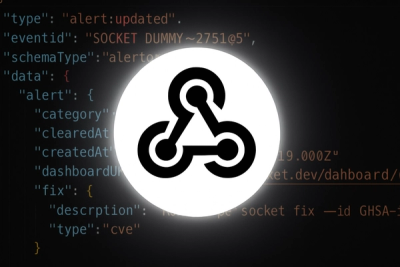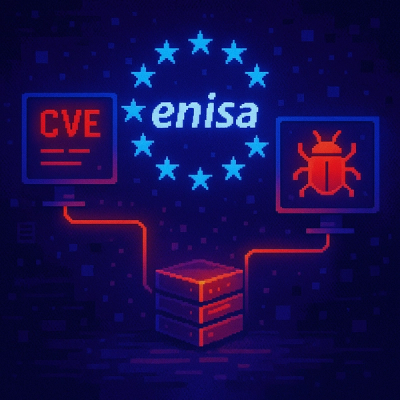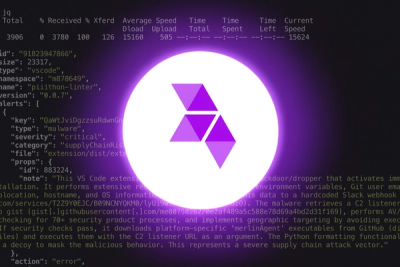
Product
Introducing Webhook Events for Alert Changes
Add real-time Socket webhook events to your workflows to automatically receive software supply chain alert changes in real time.
@j2inn/app-react
Advanced tools
React implementation of the FIN application framework. The components in this project are used to create a react application that can integrate seamlessly as part of the FIN framework.
To see the CI/CD generated documentation browse the automatically generated content.
See also the documentation for j2inn-app here.
Please refer to j2inn-app documentation for the main concepts of the FIN app framework.
The core interface for an application. An application's views are used to render the application's UI in a shell.
As well as defined application views, a user can also define a store that can be used throughout the application to hold stateful information.
An application has many views. An application view can show in the main or sidebar areas. Each application view has its own icon.
Any application views for main can also specify a category that provides a form of organizational grouping.
The category name of host has special meaning. If no project is selected, the application main or header view will still be available to use.
An application may need to share information between its different views. This can be down using an app store. An app store is declared on the app.
An application store can be accessed via the useAppStore() react hook. For example...
const store = useAppStore<MyAppStore>()
At J2 Innovations we use Mobx that enables mutations in our stores to automatically update our React based UI.
To access information regarding the shell UI and environment, a developer can use the application root store. This is accessed via the useAppRootStore() hook...
const store = useAppRootStore()
// Print out the currently selected target.
console.log(store.target)
Several useful UI components are provided so application views can have a common look and feel.
This can be used in an application's main view to render a common header. Any child components are rendered in the view headers top left hand corner. Here's an example main application view that uses this view header...
return (
<>
<AppMainViewHeader {...props}>
<TodoListCommands />
</AppMainViewHeader>
<TodoList />
</>
)
By default, the view header will display the application's icon and name.
This can be used in an application's sidebar view to render a common header. This component can also render child components. The showTargetSelector boolean property can be used to additionally render the sidebar target selector.
return (
<>
<AppSidebarViewHeader {...props} showTargetSeletor={true}>
<TodoListCommands />
</AppSidebarViewHeader>
<TodoList />
</>
)
Please note, it's recommended the sidebar target selector should only be shown if the application developer wants the user to select a different target from the main one.
A useful way to render tags in an application's main view.
A user may or may not have access permissions to an application. These server side enforced permissions also need to be handled in an application's UI.
Each applicaton can be tested for read, write, delete or all access.
The access levels can be queried via the application's root store...
const rootStore = useAppRootStore()
if (!rootStore.hasAppAccess('myAppId', 'read')) {
return <div>No read access permissions!</div>
}
...
In addition, there's also a AppAccessChecker React component that's useful for rendering child UI if the user has the correct permissions...
<AppAccessChecker app='myAppId' access='read'>
<div>This text will only render if the user has `read` access to `myAppId`</div>
</AppAccessChecker>
An application can be created using the j2 cli tool. To install the tool globally...
npm install --global @j2inn/cli
Then run the CLI tool to create the skeleton boiler plate code for an application...
j2 init "Todo list" --internal
The internal flag is used because the APIs are still being tested and developed internally.
When the tool runs, remember to select the FIN platform and not FIN5.
To build the application run...
npm install --force && npm run pod
Once built and deployed vai npm run pod, a FIN UI application runs as part of FIN...
The UI components are built using React...
The UI component for the main view. This UI is launched via the FIN app launcher in FIN's main UI.
The icon for the application's main view. This is the icon used in the FIN app launcher.
The application's main data store that can be used for inter-app messaging. Any data that needs to be persisted between application views can be stored here. This store can be accessed in a view via the useAppStore() hook.
All language translation keys are stored in locale/en.json. Other language codes with translated values can be stored here. By default the name of the application and main application view are stored here.
Also note that in FIN, all translated values are namespaced by the application's main id. To access translated values in a FIN application's UI, the useI18n() hook should be used...
const {t} = useI18n()
// Print the application's name in a span...
return <span>{t('myAppId.name')}</span>
The application is lazily loaded into FIN's UI. In order for the system to understand what data is available before loading the UI components, some meta data is declared for each application. This is held in lib/lib.hayson.yaml and lib/app.hayson.yaml.
The structure of these files uses Haystack JSON. Please note, most of the world's IDEs have inbuilt support for Haystack JSON.
The data declared in these files are Haystack defs. When FIN starts, this data is normalized into the FIN's haystack namespace. It can then be queried by other applications accordingly.
For more information regarding Haystack please click here.
A generated application can be run in webpack dev mode. In order for this to happen, there are some special components created specifically for running an application view in its own isolated environment that doesn't require a full shell.
For instance, here's the code that creates a working enviroment to test out an application view...
const container = document.querySelector('app')
ReactDOM.render(
<DevAppContainer>
<AppMain />
</DevAppContainer>,
container
)
For more information, please see DevAppContainer and DevAppRootStore.
For information regarding Haystack APIs used to work with data and REST APIs from FIN, please use the haystack-core APIs...
FAQs
React implementation of the j2inn-app framework
We found that @j2inn/app-react demonstrated a healthy version release cadence and project activity because the last version was released less than a year ago. It has 18 open source maintainers collaborating on the project.
Did you know?

Socket for GitHub automatically highlights issues in each pull request and monitors the health of all your open source dependencies. Discover the contents of your packages and block harmful activity before you install or update your dependencies.

Product
Add real-time Socket webhook events to your workflows to automatically receive software supply chain alert changes in real time.

Security News
ENISA has become a CVE Program Root, giving the EU a central authority for coordinating vulnerability reporting, disclosure, and cross-border response.

Product
Socket now scans OpenVSX extensions, giving teams early detection of risky behaviors, hidden capabilities, and supply chain threats in developer tools.